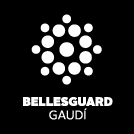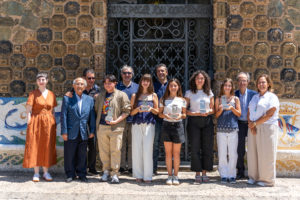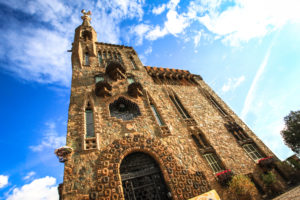By: Ferran Garcés
Bellesguard can be seen as an outdoor mosaic museum. To emphasize this approach, in the previous entry, they talked about the visit of Joan Moliner, an individual who is dedicated to individually recovering, valuing, and preserving the city’s mosaics. Many times, the mosaics he finds end up in trash containers as a result of renovating an old apartment. In contrast, Bellesguard’s mosaics can be seen on the same wall or floor where they were originally located.
Today we will continue talking about these well-preserved mosaics, but we will do it through a public entity. We refer to a project managed by the Barcelona Archaeology Service. Here is the link to the website: “The mosaics of my neighborhood.”
As you can see, the website allows you to discover mosaics according to different criteria. In the “participatory inventory” tab, you can access the main search engine, organized by the following categories: “district,” “technique,” “period,” and “keyword.” If we write the word Bellesguard in this last category, we access the mosaics of Gaudí’s work and his assistant Domènech Sugrañes.
Screenshot of the website https://ajuntament.barcelona.cat/arqueologiabarcelona/mosaics/inventari/#MC0wLTAtQmVsbGVzZ3VhcmQg Domènech Sugrañes https://bellesguardgaudi.com/tal-dia-como-hoy-muerte-de-domenec-sugranes/
Each image is accompanied by a small historical card. On the other hand, the searched page adds the mosaics of the current Escribà pastry shop on La Rambla. The reason is that the Bellesguard Tower was commissioned by the Figueras family, who were the owners of this establishment in the early 20th century. At that time, instead of a pastry shop, it was a “Factory of Food Pastes,” which is one of the phrases we read on the facade arch. However, it is necessary to clarify that neither Gaudí nor Domènec Sugrañes were the designers of this factory.
Regarding the Bellesguard mosaics, the most interesting thing on the page is that it allows us to discover the wide range of materials used in this work. Indeed, we have some made, obviously, with ceramics, but also others less known, such as stone and glass… The ceramic ones are used to decorate the garden benches and the interior of the vestibule. The stone ones make up the facade cladding, in a design that is quite original because it presents elements that are both neo-Gothic and modernist. Finally, the glass ones are found in two elements designed to be seen from afar. The first, the tip of the flag-shaped pinnacle, crowns and the characteristic four-armed cross of Gaudí. The second, the entry plaque to the Bellesguard Tower, with the name of the property (1) All in all, an outdoor museum of the fascinating world of mosaics that encourages you to see for yourselves…
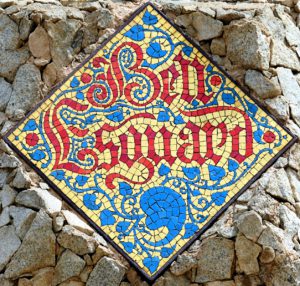
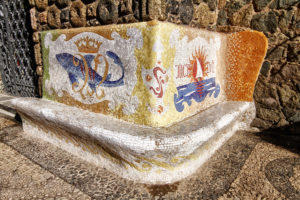

Notes
(1) In the “Gaudí & Trencadís” exhibition, they chose this piece, and the photo caption said: “Colored glass paste from Venice. In Catalonia, it was used to create relevant elements. It was the most expensive material and was replaced by ceramic and common glass.” Website: visitmuseum.gencat.cat, Link
